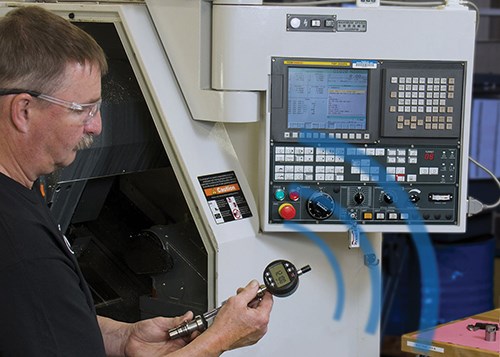A Random Conglomeration of Gaging Tips
Consider these guidelines to improve your measurement results.
There are many elements of the gaging process. Just remember SWIPE (standard, workpiece, instrument, people, environment), or review some previous Quality Gaging Tips articles for the important elements of the measuring process and how each of them can affect your results.
In addition to these basics, however, is a set of common sources of error that should be considered when one is pulling together the resources to make quality checks. Some of these errors have cost people a great deal of time and money—not to mention a few red faces. So here’s a random conglomeration of gaging tips to bear in mind:
• Be aware of the units of measurements in which you are working and of the resulting calculations in order to account for rounding errors. Also be careful when converting from one unit to another or even in correctly defining specifications. It’s embarrassing to receive a 6-inch master when you needed a 6-mm.
• The environment is the No. 1 source of error. Better to wait for a part to stabilize than to accept a hot reading. Use heat sinks if necessary. Also, consider unexpected heat from operators, or drafts from air conditioning or opening and closing of doors.
• Use the correct master for the application. A master that has the right grade for the tolerance can save money without sacrificing quality. If master deviations are known, apply them correctly and improve results.
• Give the gage a “physical” before use. Check the contacts, locking arms and components for tightness and wear. It’s amazing how a loose contact point can wear, even after only a couple of hours of use.
• Make sure the gage is measuring to the proper standard for the part. This is especially important for compressible materials, master threads or thin-wall parts. Are the gaging pressure, contact shape and orientation also correct?
• Consider that errors associated with uncertainty add up. If your gage block set is calibrated four or five levels removed from NIST, a significant amount of error could accumulate when multiple blocks are stacked.
• When using a comparative gage, master often and monitor the results. This builds confidence in the gage, and can point to environmental or gage issues.
• Apply the correct contact point for the application. The contact can influence the part by gaging pressure and part deformation. Alignment errors between a flat contact and an anvil will cause issues when the part is placed in the gage. Rather, use a radius or flat whenever possible.
• On universal gages with long measuring ranges, gage alignment is important. The sensitive contact must be perpendicular to the reference anvil or cosine errors will affect the results.
• Also, for such universal gages, it’s a good idea to have check standards available for various points within the measuring range. While a gage may look sound, an errant bump can throw something out of alignment, and re-zeroing with one master may not expose the error.
• Ensure that the masters you are using have been recently and properly certified by a reputable service.
• When putting a measuring system together, take a moment to create an error budget for the system. You will be more apt to understand where your greatest sources of errors are and take steps to minimize them.
• When doing surface-finish checks, ensure the correct parameters and settings are chosen. Also, check that the tip radius is the one specified for the process. An incorrect cutoff or smaller-than-specified radius can significantly influence results.
• Remember that GR&R analysis measures the repeatability and reproducibility of the measuring system. It is not a guarantee of an accurate measurement. Have the gage calibrated and certified for accurate performance.
• When tolerances on your parts change, simply increasing the resolution of the indicating device might not improve its performance. This may require significant design improvements.
• Consider part geometry and the measurement method. Form errors will show different results between two- or three-point contact systems.
The list could go on and on, but these tips represent some of the most common but overlooked sources of errors. Follow this checklist, and your results will almost certainly improve.
Read Next
A History of Precision: The Invention and Evolution of Swiss-Style Machining
In the late 1800s, a new technology — Swiss-type machines — emerged to serve Switzerland’s growing watchmaking industry. Today, Swiss-machined parts are ubiquitous, and there’s a good reason for that: No other machining technology can produce tiny, complex components more efficiently or at higher quality.
Read More3 Mistakes That Cause CNC Programs to Fail
Despite enhancements to manufacturing technology, there are still issues today that can cause programs to fail. These failures can cause lost time, scrapped parts, damaged machines and even injured operators.
Read MoreEncountering Surface Finishes in the Everyday World
Surface measurement is becoming increasingly important to ensure proper performance of a manufactured product. Advanced surface measurement tools are not only beneficial in the manufacturing industry but also have unconventional applications.
Read More
















.jpg;maxWidth=300;quality=90)




